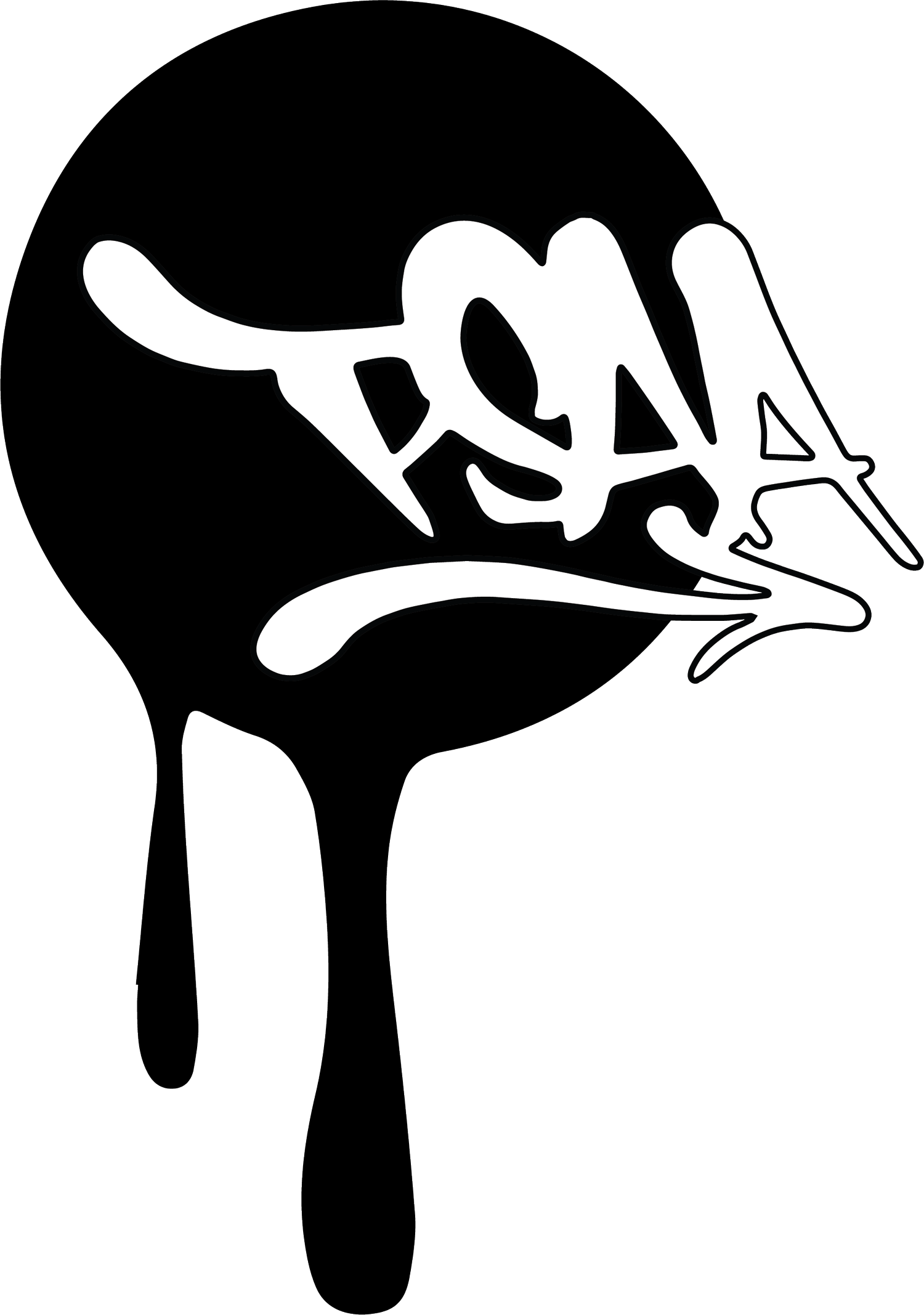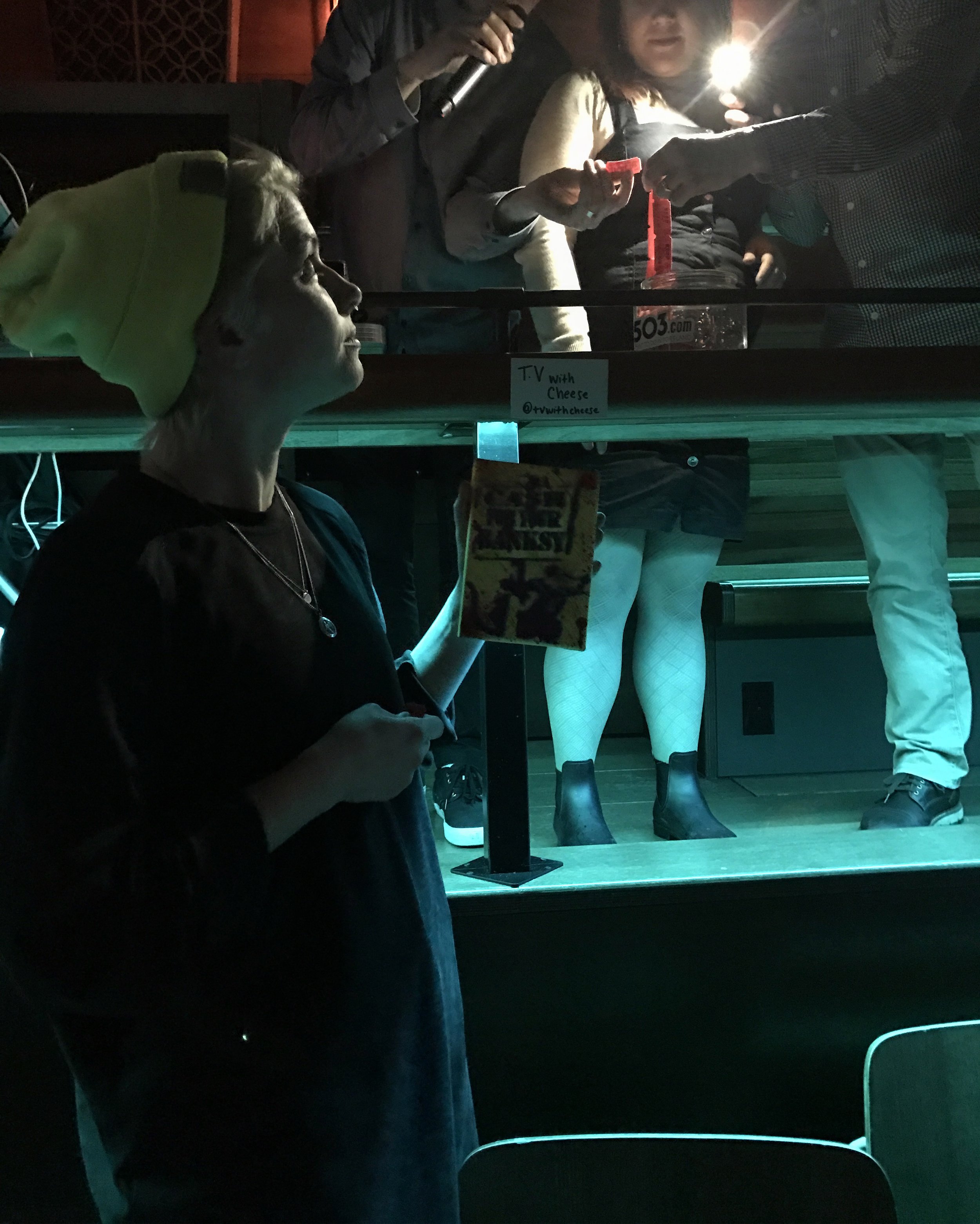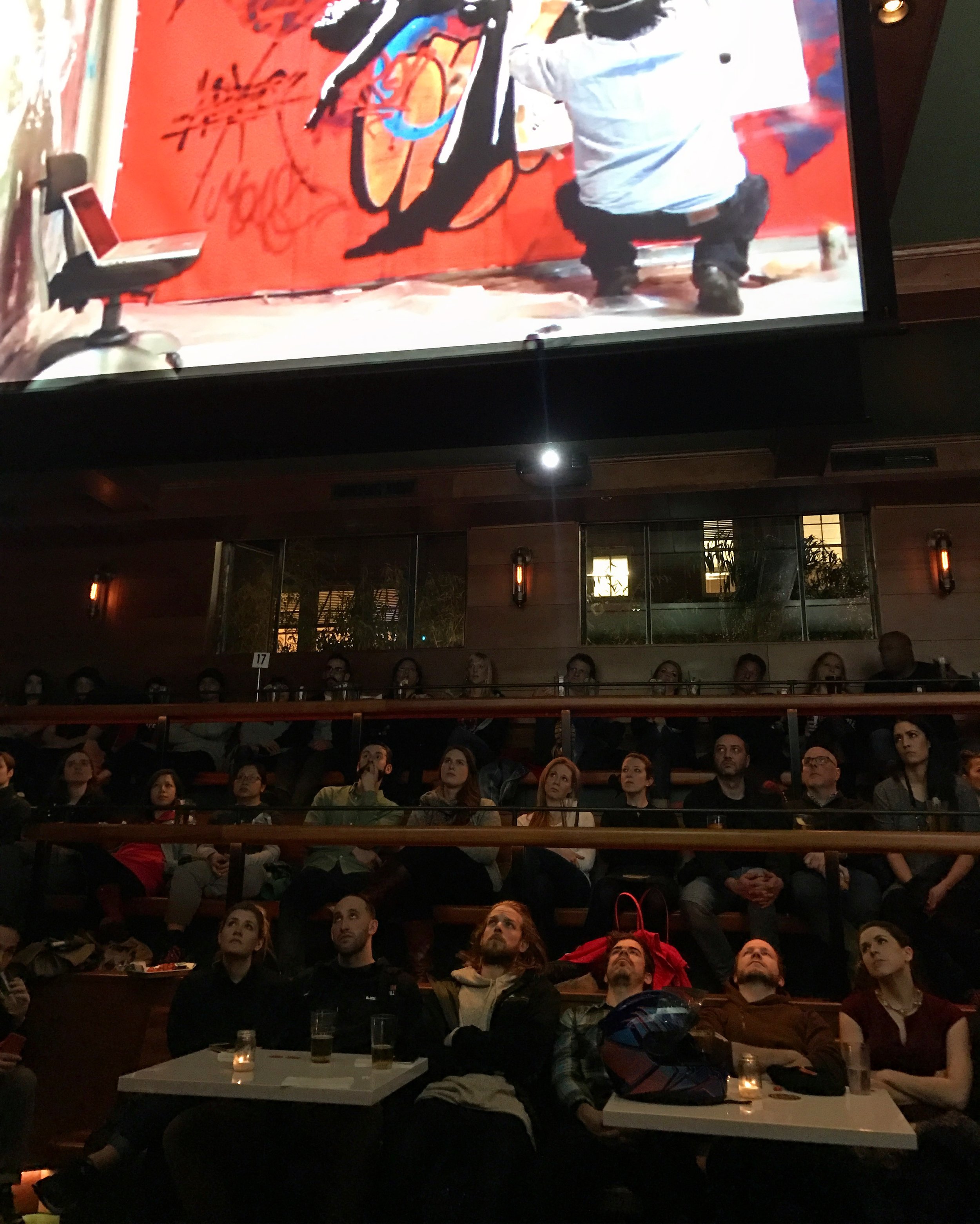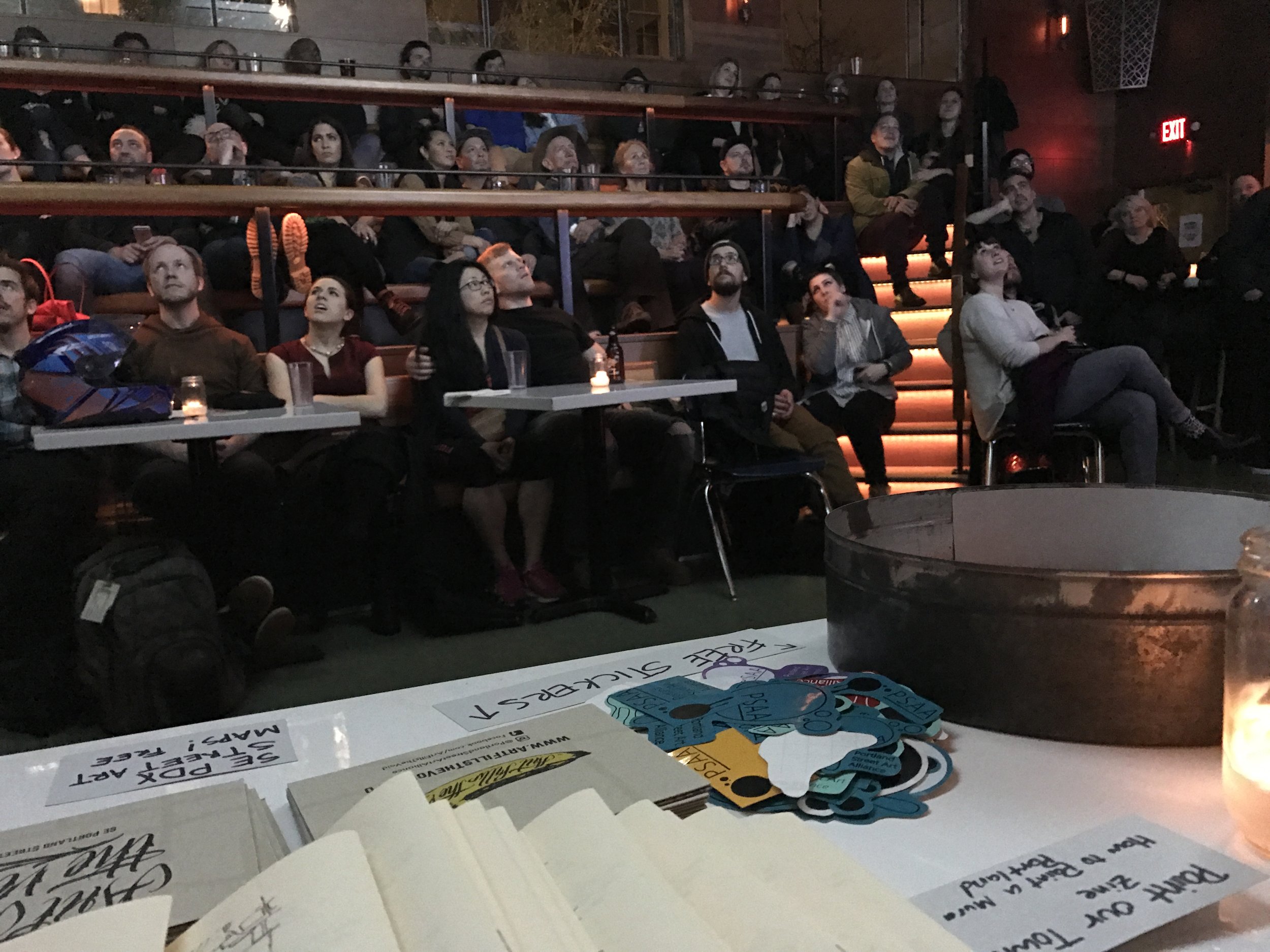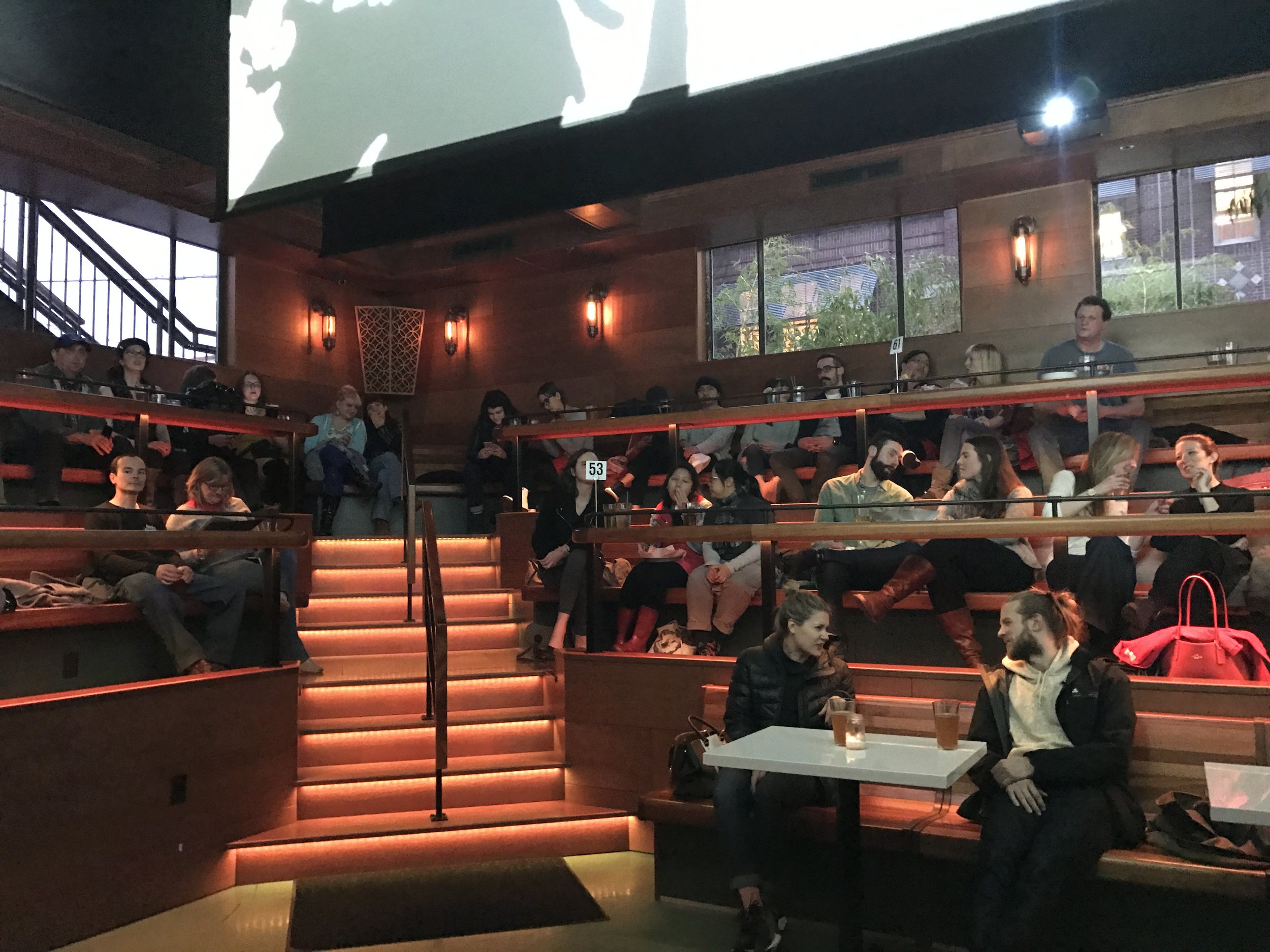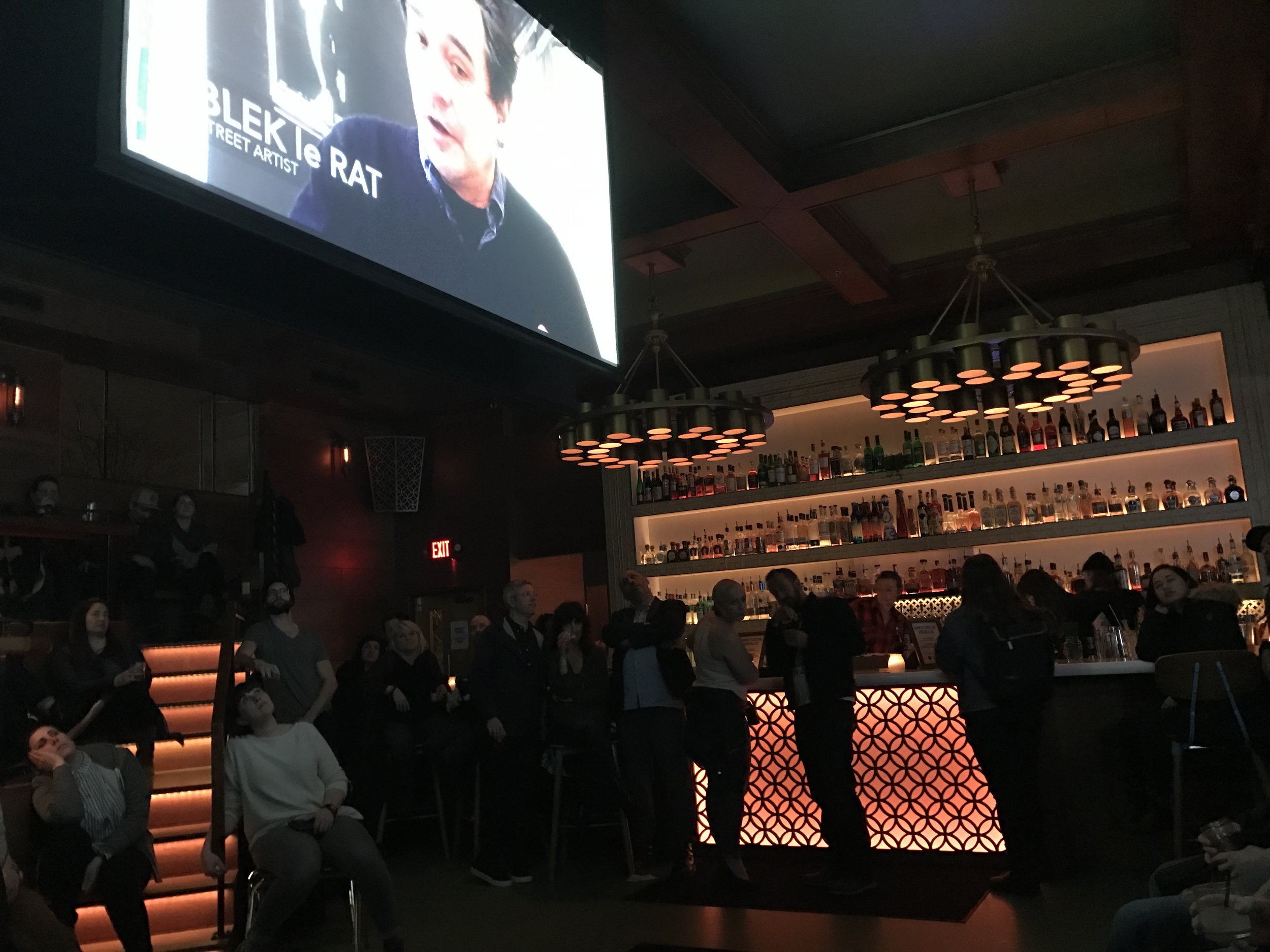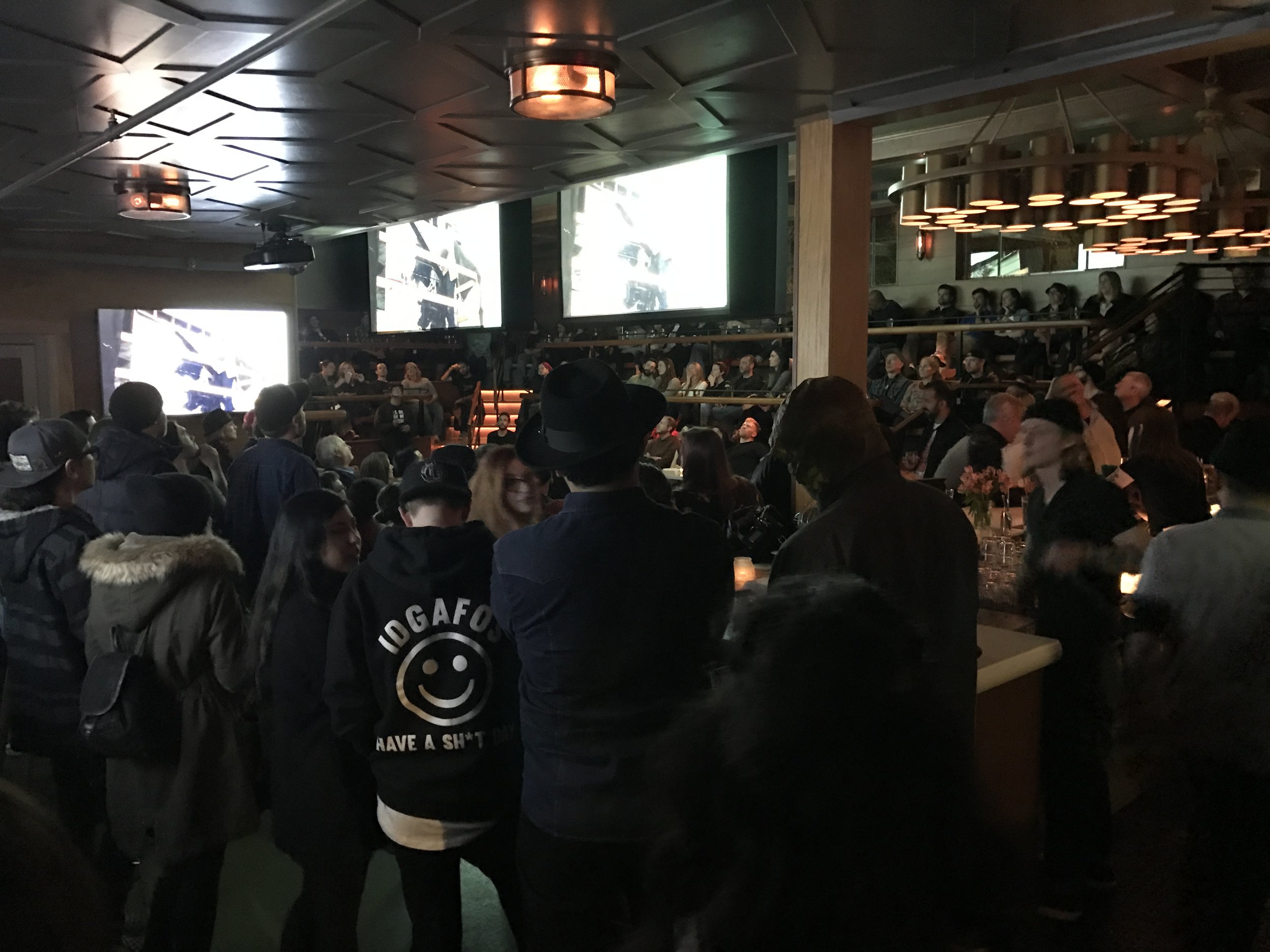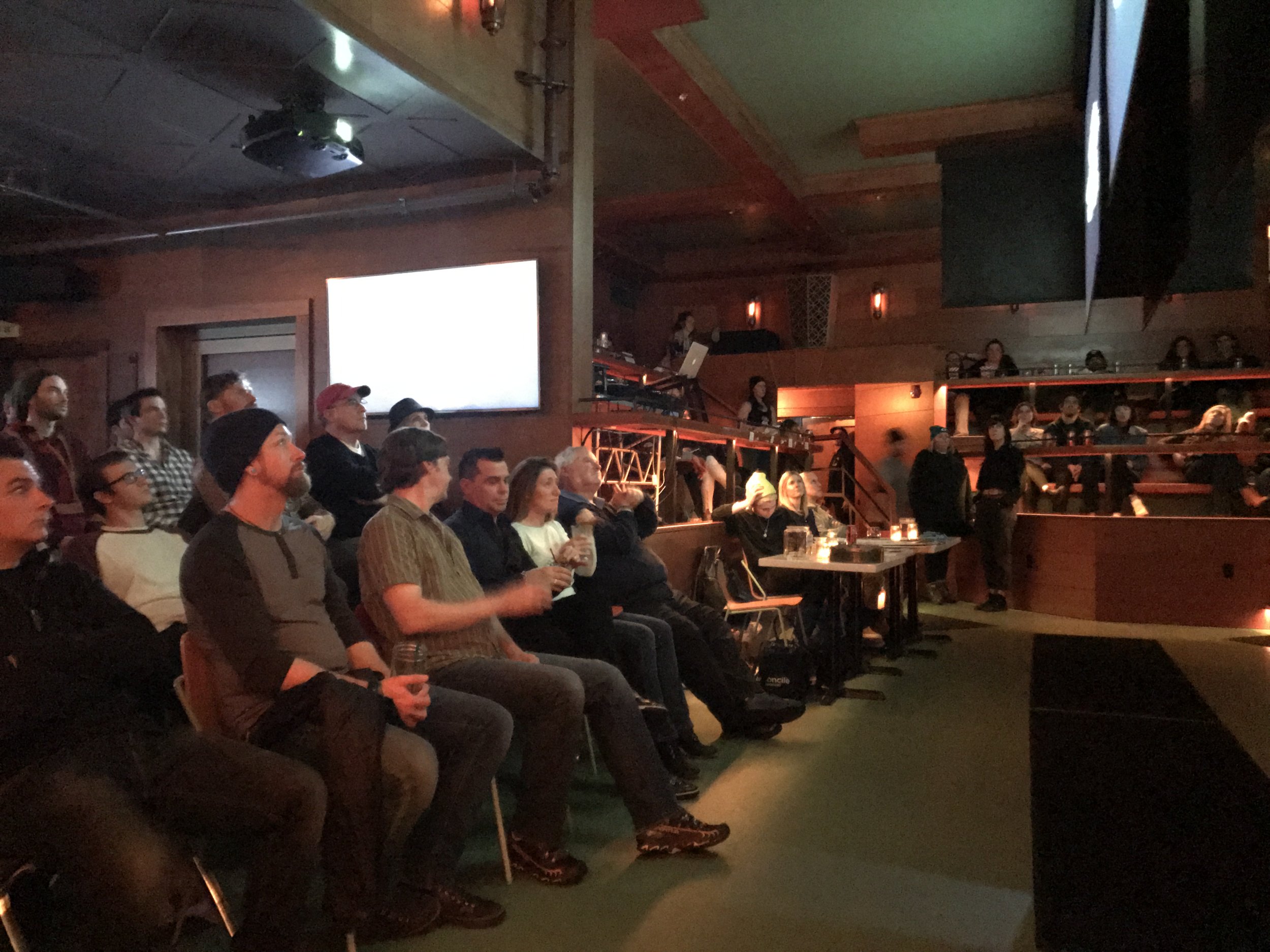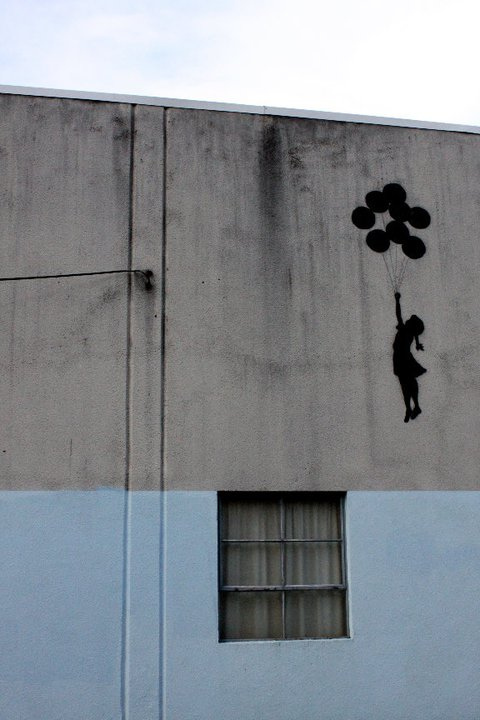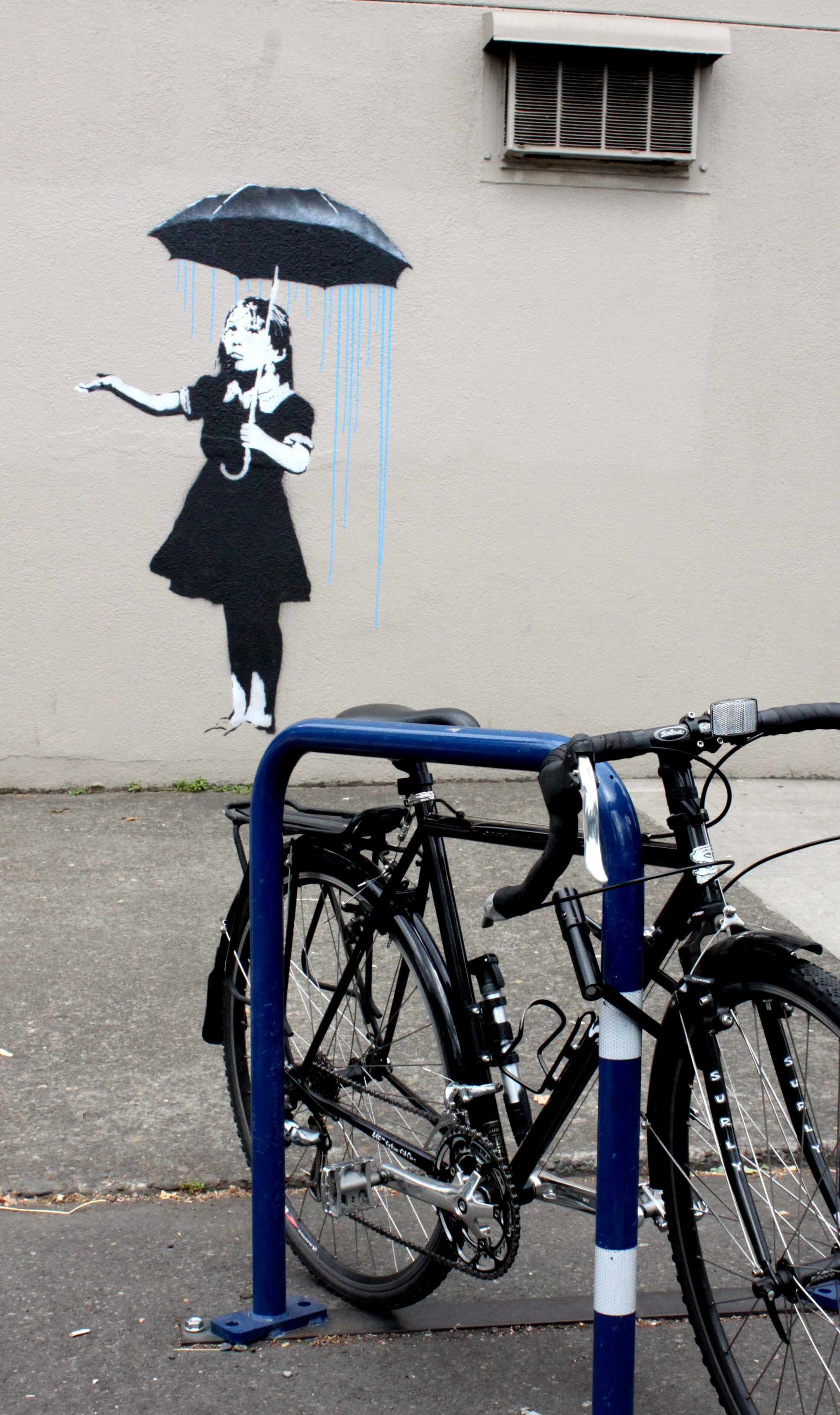PSAA recently co-hosted a free screening with do503 of the Saving Banksy documentary, directed by Colin M. Day (2017). do503 is an event website and app, part of an international network of sites that list and ranks daily events happening in cities. Do503 periodically hosts their own events which support local non-profits, like Portland Street Art Alliance, helping to raise money to support the causes.
At the Saving Banksy event, proceeds from a special cocktail menu and an original art raffle were donated to PSAA. We also tabled at the event, with art for sale by local street artists, informational brochures, and free stickers.
Finally, PSAA arranged for two local street artists to speak about their involvement in the documentary. Mad One, who helped distribute the film across the United States, and Jesse Hazelip who was featured in the film putting some fresh new art in the streets of California. The event was well attended, with Century Bar reaching capacity. The following is a film review, written by PSAA contributor Lourdes Jimenez (@lou_jim).
Saving Banksy follows the life of a specific piece of street art made in San Francisco by famous nom de guerre street artist, Banksy. The film focuses on the profiteering and co-option that is occurring within the street art world.
Banksy is of course famous for his elusiveness, clever stencil imagery, social commentary, cabalistic messages, and extremely site-specific work. His fame has reached such fervor that there is now a new phrase associated with this sweeping phenomenon, “The Banksy Effect.”
The immense power of this anonymous figure has arguably created one of largest markets for contemporary art in generations. As Wooster Collective explains, “Like Andy Warhol before him, Banksy has almost single handedly redefined what art is to a lot of people who probably never felt they appreciated art before. By being an iconoclast, and in the process becoming a mythic hero for a lot of people, Banksy has become an incredible icon in our society.” With worldwide distributions, sold-out events, and extremely high auction prices, anything that is associated with Banksy goes viral.
Cash for your Banksy Installation in Portland, OR by Mad One.
Banksy’s art seems to transcend the typically argument of graffiti being “art” or “vandalism,” with admirers cutting across the spectrum of society. People who would usually classify anything done without permission as graffiti vandalism, seem to view Banksy pieces as something else, as art, with value. As legendary street artist Blek le Rat says in the film, “It’s not Art unless you can sell it for lots of money.” For these reasons Banksy’s art both paradoxically stays in the streets and is removed quickly. Many Banksy pieces are preserved behind protective glass, and cut out of walls to sell in auction houses.
When Banky’s film, Exit Through the Gift Shop premiered in San Francisco in 2010, they skipped the interview and press events, and instead gifted the city with a handful of illegal graffiti in the Mission, Chinatown, North Beach, and South of Market. As the days went by, many of these pieces were written over and added to by others, however, at least one piece in the Haight-Ashbury District managed to remain untouched. Placed at the top corner of an old Victorian bed & breakfast, a rat styling a Che Guevara beret and clinging to a Magic marker. The mischievous rat drew a long line from one side of the building to the next, ending with text, “This Is Where I Draw the Line.”
Brian Greif, an art collector and former general manager of KRON-TV, was able to strike a deal with the bed & breakfast owner to buy the top corner of their building’s siding and remove 10 redwood siding planks on which the rat was painted. Grief raised $10,000 to help cover some of the costs in its removal and preservation through a Kickstarter campaign. All in all, it cost Greif about $40,000 to remove the Bansky piece safety from the building and preserve it.
Greif promised to never the sell artwork, even though other Banksy creations have sold for millions and he has been offered thousands to sell it. Unlike most art collectors and gallery salesmen, Greif’s mission with the Haight Street Rat, was to preserve the art and maintain its rightful place in the public’s eye, where it can be safely displayed for the public to view and appreciate. He wanted to donate the piece to a museum, but no museum will accept his offer due to the lack of authentication of the piece, and permission from the living artist, Banksy.
Most of the time when Banksy’s art is removed from the streets, it is sold to elite clientele. For example, Stephen Keszler a private art dealer with a gallery in South Hampton, NY, is known for removing Banksy artwork from public spaces and selling them for immense personal gain, all without the artist’s consent.
Saving Banksy raises important questions about artistic intent, the value and impact of street art, the commodification of it, and public ownership of graffiti art. Is graffiti art worth saving for future generations to learn from and enjoy? Does removing it from its original context (the street), completely diminishing its importance and changing its meaning?
